The Devialet Phantom II 98 dB Opéra de Paris speaker has a name that speaks of grand ambitions, and the brand isn’t shy about boasting that it will live up tothe standards of the Opéra Garnier, one of the most beautiful and storied opera houses in the world. The stylish, egg-shaped speaker even comes with real gold leaf on the sides as an homage to the gilded interior of the Paris landmark. Not surprisingly, it has a price tag to match.
The Phantom II is the smaller of the two devices in the French manufacturer’s just-revamped all-in-one speaker line — the Phantom I is more powerful and more expensive. Here’s what Devialet has to say about this compact wireless speaker, which it describes as “insanely powerful.” “From 18Hz to 21kHz, feel every note with phenomenal purity, precision and richness. 0 distortion, 0 saturation and 0 background noise ensure you get nothing but audiophile-grade playback, even at 900W.”
With all that in mind, our engineers were eager to put the Devialet Phantom II 98 dB Opéra de Paris through our rigorous DXOMARK Wireless Speaker test suite. In this review, we will break down how it fared at audio playback in a variety of tests and several common use cases.
Key specifications include:
- Bluetooth, AirPlay2, 3.5mm analog jack, optical, Spotify connect
- Width: 157mm (6.2 in), height: 168mm (6.6 in), depth: 219mm (8.6 in)
- 4.3 kg (9.4 pounds)
- 1 aluminum full-range driver, 2 aluminum bass drivers
Test conditions:
- Tested with: iPhone for music, Apple TV for movies
- Communication protocol used: AirPlay2 for music, jack for movies
- Firmware version: 2.10.0
About DXOMARK Wireless Speaker tests: For scoring and analysis in our wireless speaker reviews, DXOMARK engineers perform a variety of objective tests and undertake more than 20 hours of perceptual evaluation under controlled lab conditions. This article highlights the most important results of our testing. Note that we evaluate playback using only the device’s built-in hardware. (For more details about our Speaker protocol, click here.) The Devialet Phantom II 98 dB Opéra de Paris falls into the Premium category of devices in the DXOMARK Speaker rankings.
Test summary
 Devialet Phantom II 98 dB Opéra De Paris
Devialet Phantom II 98 dB Opéra De Paris


Pros
- Good performance at loud volumes
- Excellent artifacts performance
- Good tonal balance in quiet environments
Cons
- Uneven tonal balance
- Below-average spatial performance
- Dynamics affected by aggressive limiting
With a global score of 133, the Devialet Phantom II 98 dB Opéra de Paris Speaker lands in the upper echelons of the advanced and premier speakers we’ve tested, but a bit down the line from the top score of 160 achieved by the Bowers & Wilkins Formation Wedge, and a few notches down from the Cabasse The Pearl Akoya and the Naim Mu-so 2nd Generation Speaker, with scores of 144 and 137, respectively.
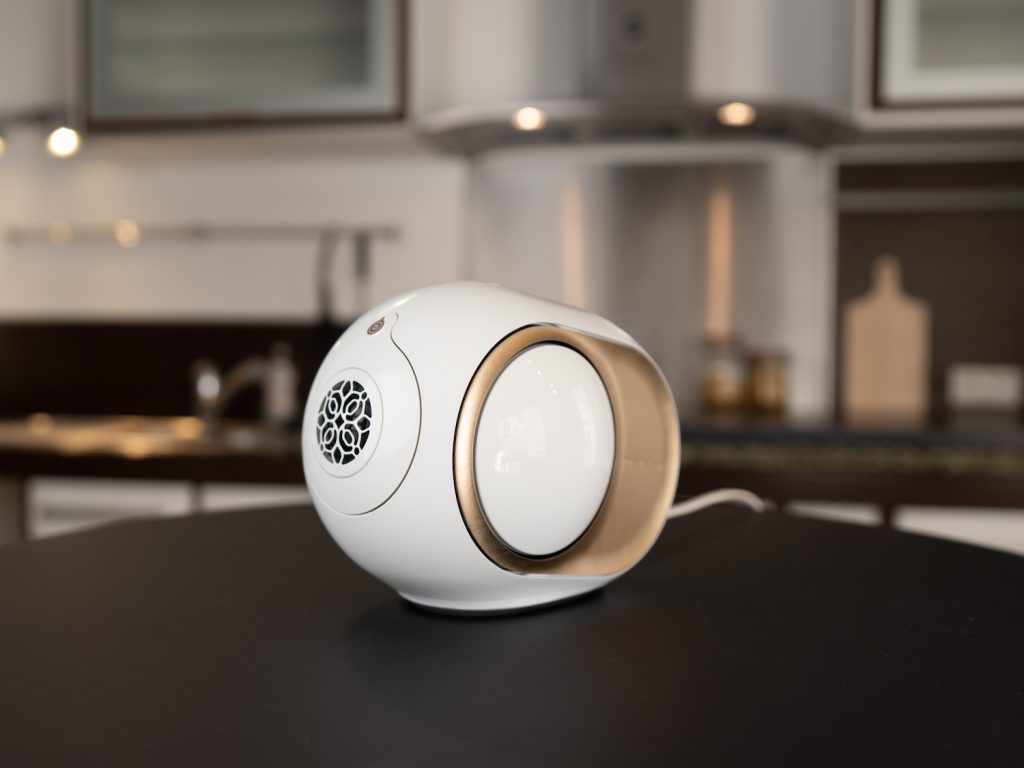
The Devialet Phantom II 98 dB Opéra de Paris Speaker does indeed perform well at loud volumes, as promised, with a very high score in our artifacts attribute (there were no spectral artifacts noted in our perceptual tests, though some modest issues in our objective testing). And the maximum volume is good, if not quite in line with some similarly-priced devices we’ve tested. The device scored well in our party use-case scenario. In quiet environments, tonal balance is correct: high-mids and treble are more noticeable. While there was an audio/video latency problem when using Bluetooth, the audio latency could be adjusted using the Devialet app for the optical/jack input.
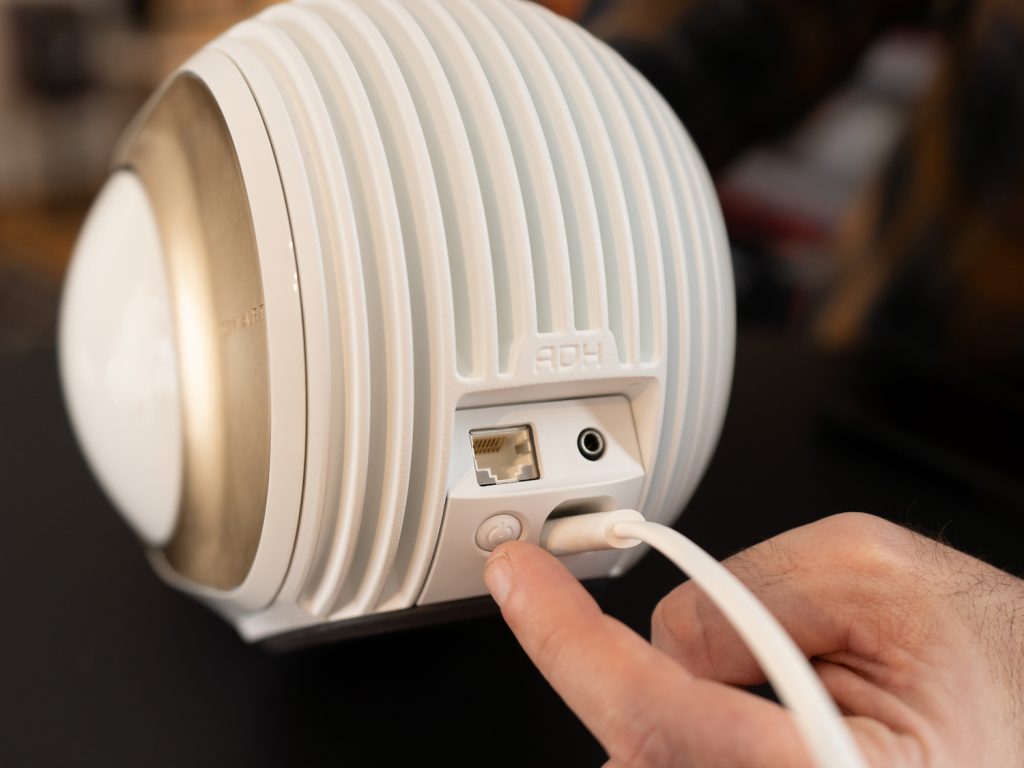
Some of the limitations of the Devialet device are related to its design: it’s by nature a mono device, and it has a narrow, front-firing directivity, especially when it comes to treble. Tonal balance is uneven in most use cases, with an intense low-midrange focus and a significant lack of clarity. The dynamics performance of the Phantom II Opéra de Paris is seriously affected by an aggressive limiter, especially at loud volumes. The device lost some points for volume consistency because the last four volume steps all have the same loudness.
Sub-scores explained
The DXOMARK Speaker overall score of 133 for the Devialet Phantom II 98 dB Opéra de Paris Speaker is derived from a range of sub-scores. In this section, we will take a closer look at these audio quality sub-scores and explain what they mean for the user, and we will show some comparison data from two of the device’s principal competitors, the Naim Mu-so 2nd Generation Speaker and The Pearl Akoya by Cabasse.

Timbre
Devialet Phantom II 98 dB Opéra De Paris
152
DXOMARK timbre tests measure how well a speaker reproduces sound across the audible tonal range and takes into account bass, midrange, treble, tonal balance, and volume dependency.
The Devialet Phantom II 98 dB Opéra de Paris speaker had a good overall timbre performance, though at this price point, our engineers were hoping for more. Tonal balance was uneven in most use cases. With an intense low-midrange focus, the device sounds muddy and boxy. The lack of high midrange and treble, as well as a lack of low-end extension/sub-frequencies add to the mid-forward tonal balance.
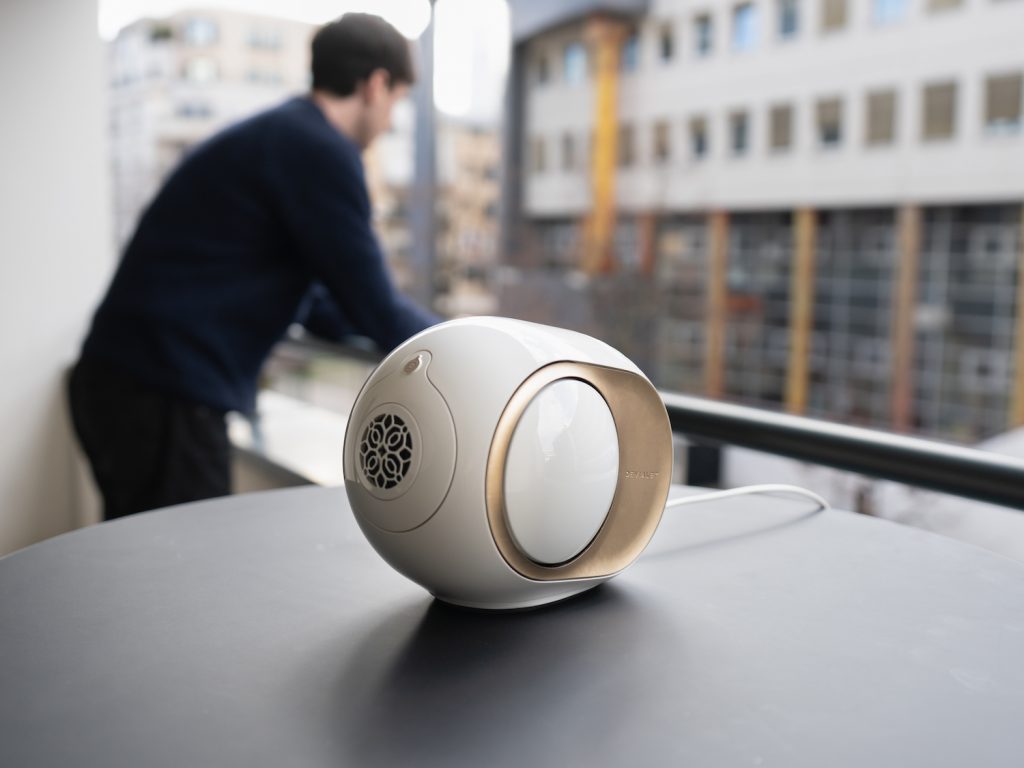
In a quiet environment the tonal balance is better — the high mid and treble are more noticeable. The Devialet device also performs better at loud volumes, with a more precise treble response, and overall timbre that is less low-mid focused.

Dynamics
Devialet Phantom II 98 dB Opéra De Paris
137
Our dynamics tests measure how well a device reproduces the energy level of a sound source, taking into account attack, bass precision, and punch.
The Devialet Phantom II 98 dB Opéra de Paris Speaker had an above-average overall score for dynamics, but in many ways it was a mixed bag. The performance was seriously affected by aggressive limiting, especially at loud volumes. In most use cases, attack was not very precise and feels rounded (in that regard, the lack of high mid and top end doesn’t help).
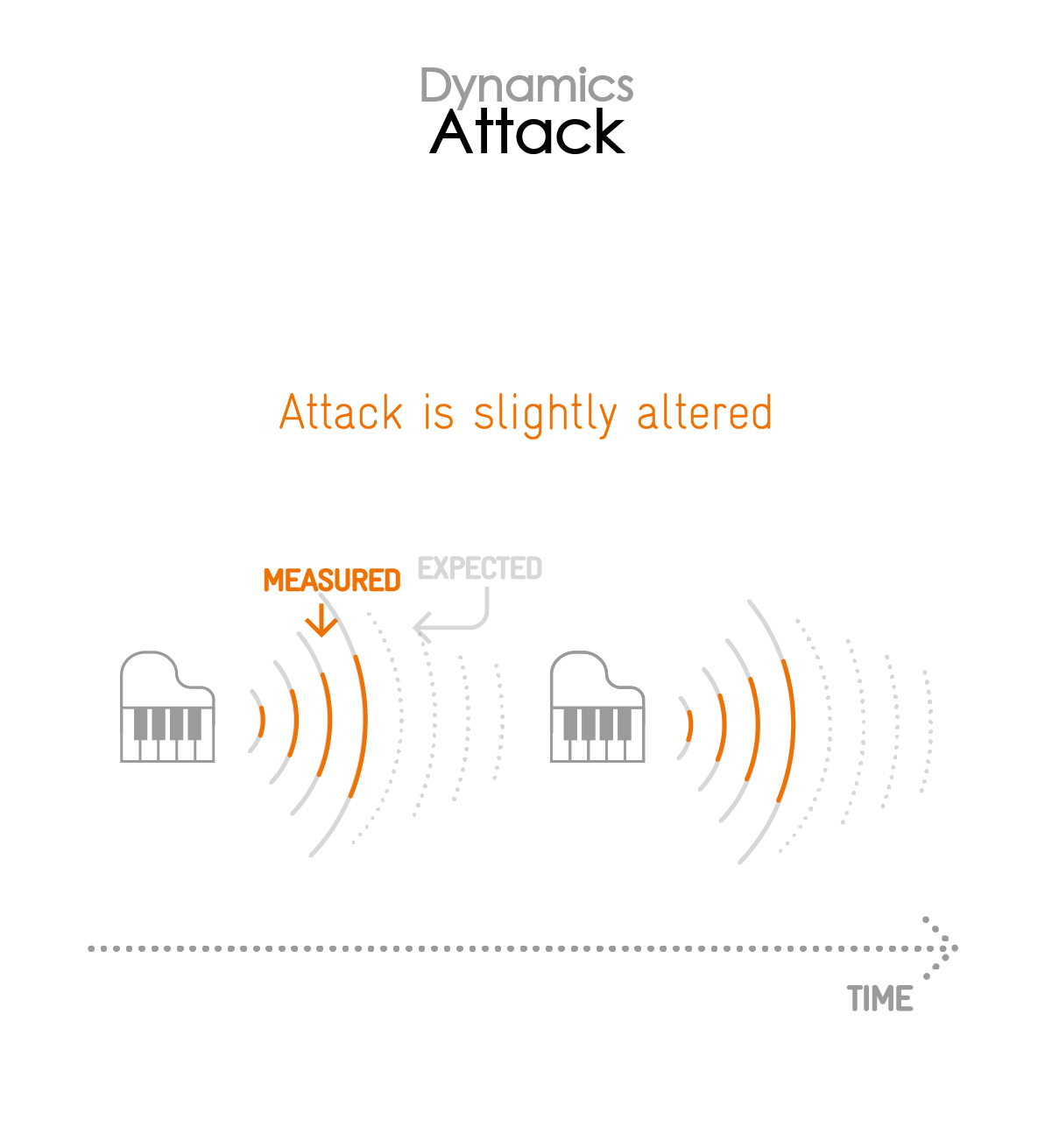
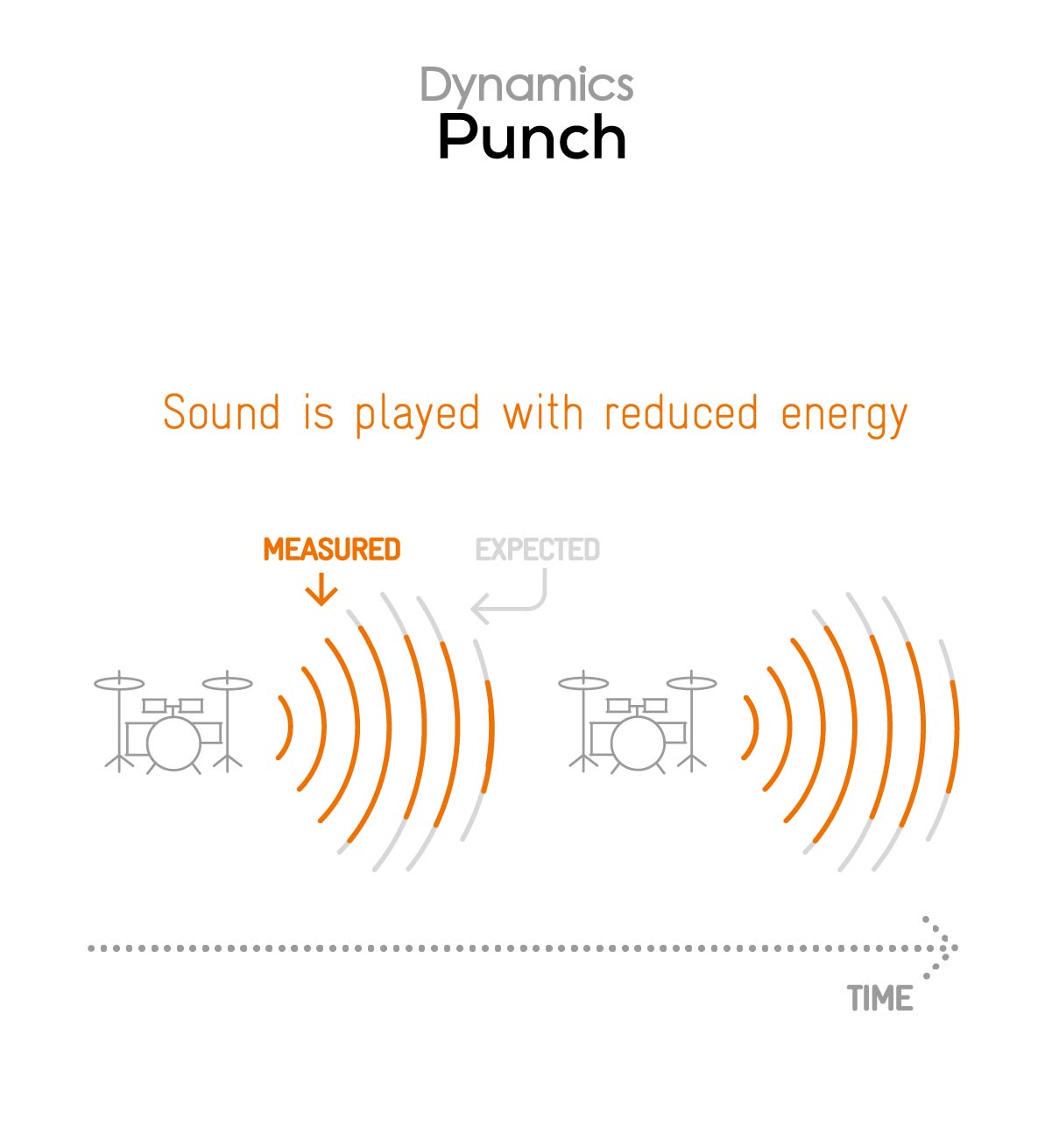
Bass precision is also impaired by compression issues and a lack of low-end extension. Moreover, as the limiter is slow, loud bass hits sometimes lead to overshooting. Punch lacks energy overall, mainly due to intrusive limiting. The lack of low end also affects the performance because bass rendering is quite weak and doesn’t bring the needed power to punchy genres (hip-hop, electronic, etc.). In the quieter use cases it performs more effectively (it does very well in the bathroom, for example), but it is still too compressed.
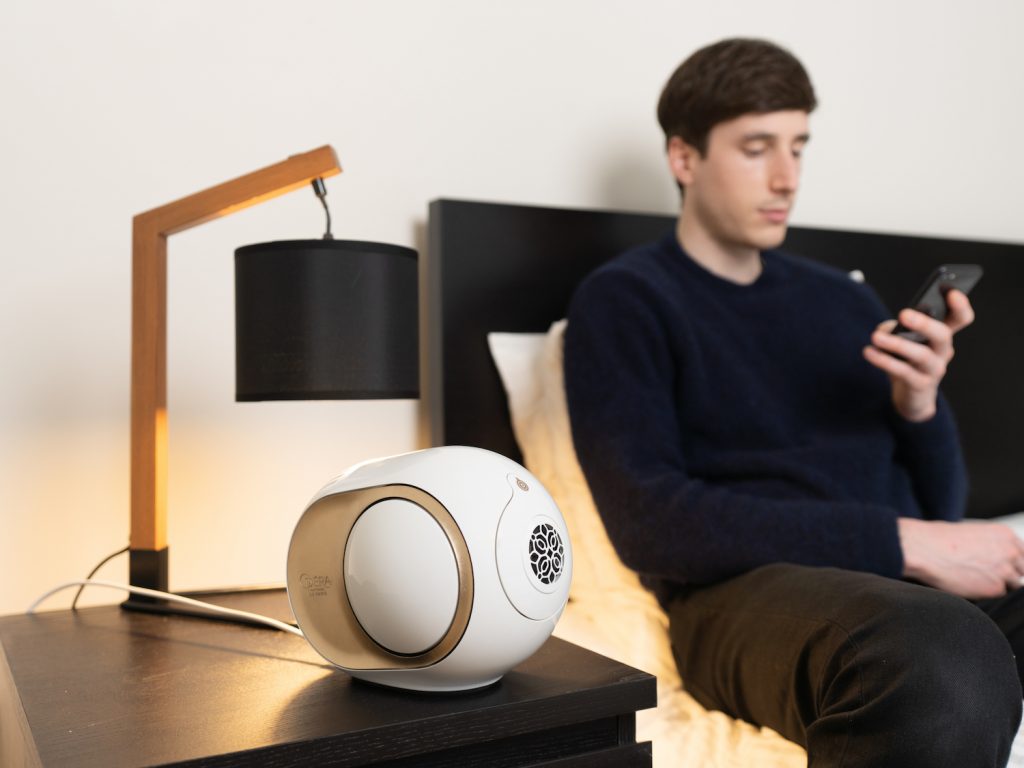

Spatial
Devialet Phantom II 98 dB Opéra De Paris
111
Our spatial tests measure a speaker’s ability to reproduce stereo sound in all directions, taking into account localizability, balance, wideness, distance, and directivity. Please note that wideness is 0 on mono speakers and on speakers that cannot deliver a significant stereo effect.
The Devialet device fell short of average in the spatial attribute, in part because it’s a mono device, so the score for wideness was zero, but also because of its narrow, front-firing directivity. The tweeter is particularly directive, and the treble response is significantly decreased as soon as the listener moves from being perfectly in front of the speaker. Localizability is impaired by a lack of high-mid and top-end precision.
This lack of treble and high midrange does not help with distance perception. In most use cases, voices are obscured by a muddy/low-mid-focused sound, impairing distance performance.
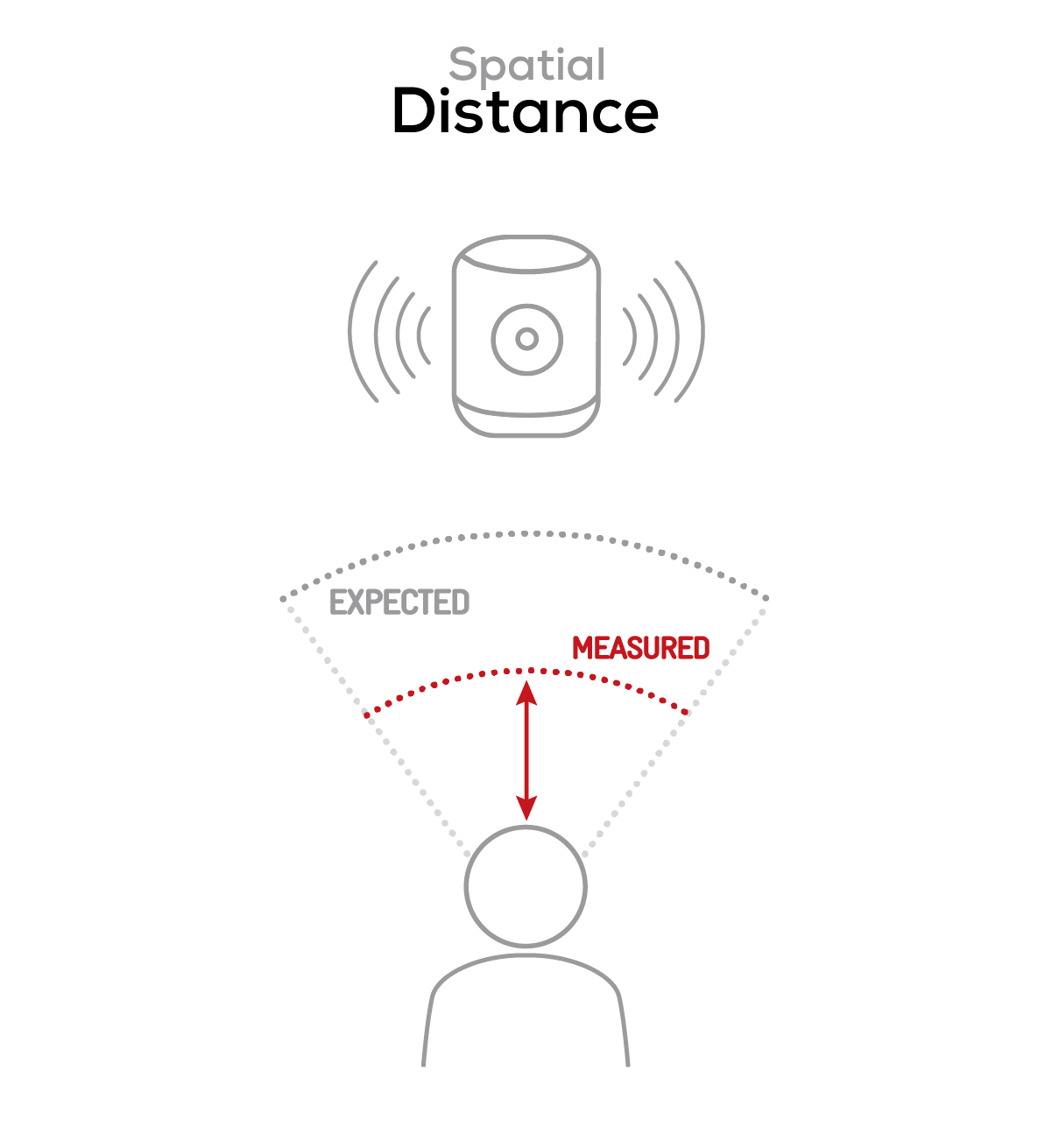
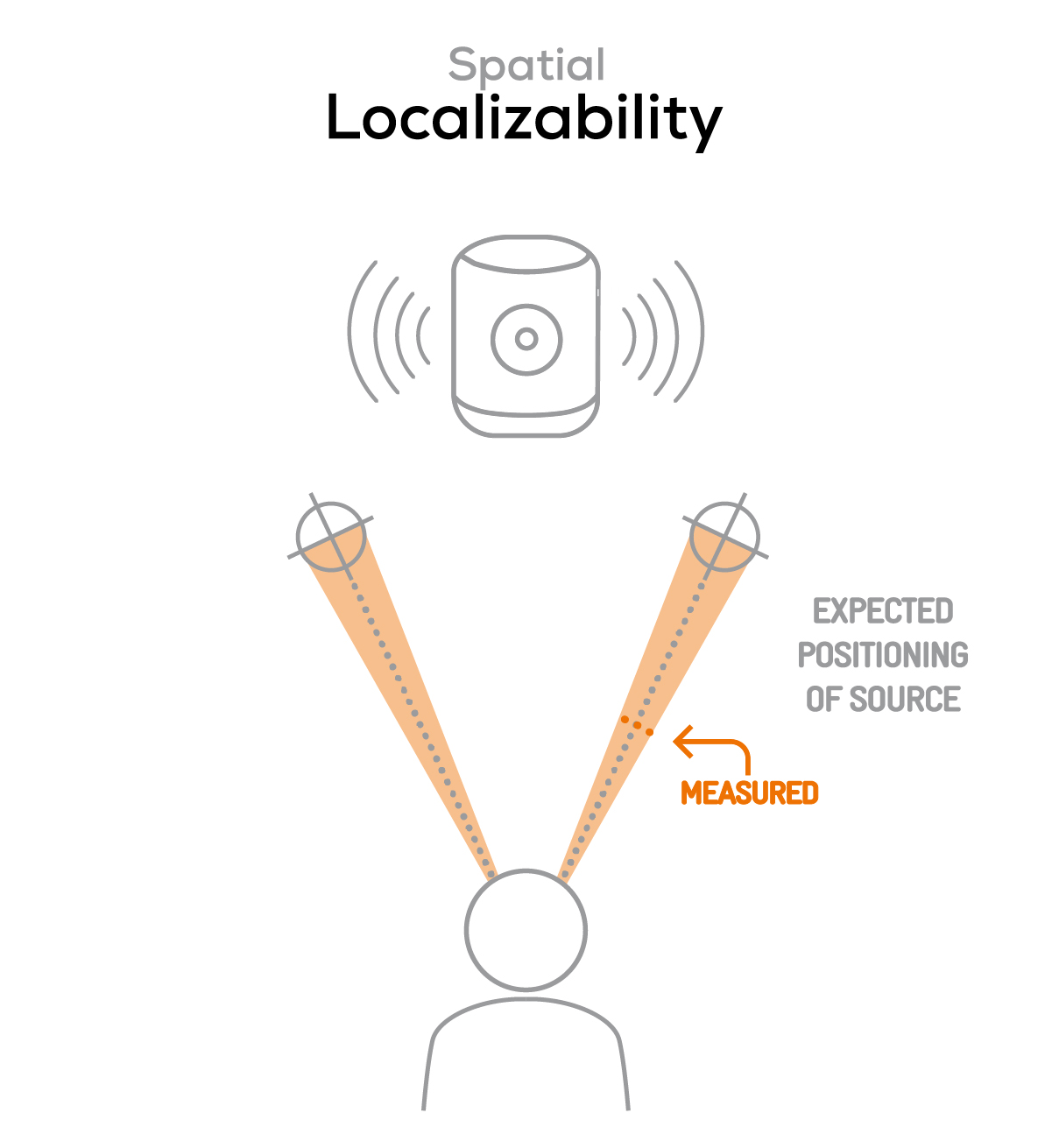

Volume
Devialet Phantom II 98 dB Opéra De Paris
141
Our volume tests measure both the maximum loudness a speaker is able to produce and how smoothly volume increases and decreases based on user input.
The volume performance of the Devialet Phantom II 98dB Opéra de Paris was good overall, but it lost some points for volume consistency because the last four volume steps are the same because of a limiting issue. Maximum volume is decent, but our engineers noted that some other tested devices at this (high) price point were louder.
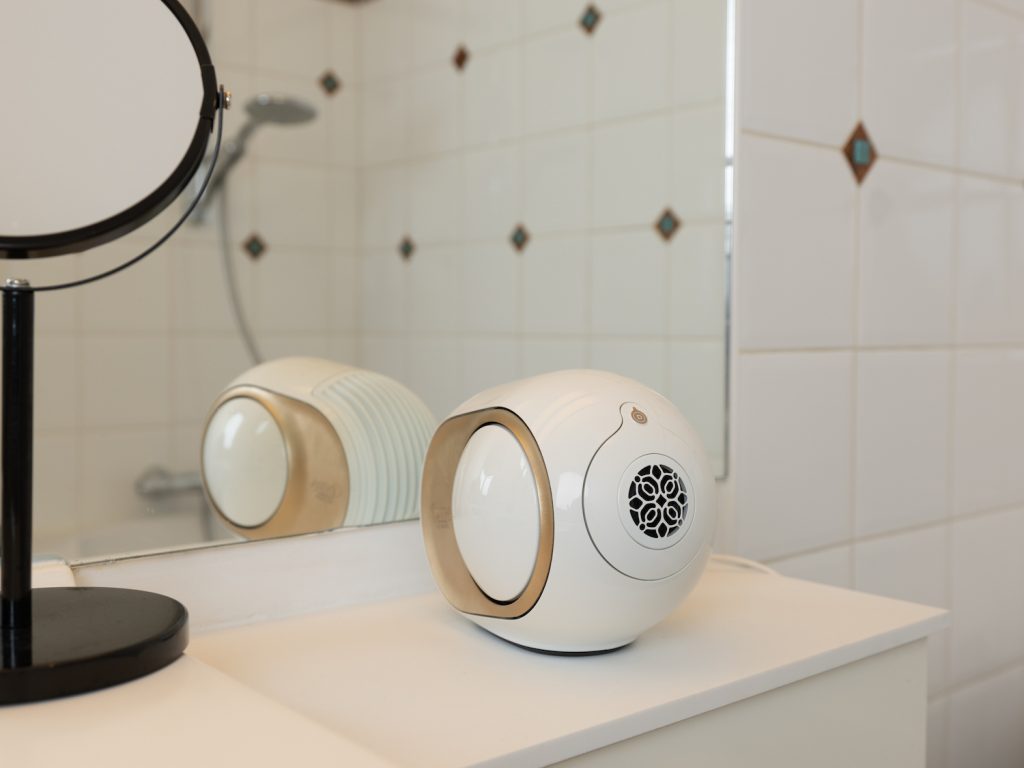
Here are a few sound pressure levels (SPL) we measured when playing our sample recordings of hip-hop and classical music at maximum volume:
| Correlated Pink Noise | Uncorrelated Pink Noise | Hip-Hop | Classical | Latin | Asian Pop | |
| Devialet Phantom II 98 dB Opéra De Paris | 87.9 dBA | 87.4 dBA | 84.3 dBA | 77.8 dBA | 86.4 dBA | 77.7 dBA |
| Cabasse The Pearl Akoya | 86.9 dBA | 84.2 dBA | 85 dBA | 76.2 dBA | 86.9 dBA | 77.9 dBA |
| Naim Mu-so 2nd Generation | 90 dBA | 86.8 dBA | 87 dBA | 81.3 dBA | 87.3 dBA | 82.8 dBA |

Artifacts
Devialet Phantom II 98 dB Opéra De Paris
133
Our artifacts tests measure how much source audio is distorted when played back, along with such other sound artifacts as noise, pumping effects, and clipping. Distortion and other artifacts can occur both because of sound processing and because of the quality of the speakers.
The Devialet Phantom II 98dB Opéra de Paris had an exceptional score in the artifacts attribute, with very few artifacts overall. Some distortion was recorded in objective measurements, but in perceptual testing no spectral artifact was noticed, even at loud volumes. Some temporal artifacts were noticed on content with a strong low-end presence, mainly because of the intrusive limiting.
Audio/video latency when using AirPlay 2 was not bothersome, but with Bluetooth it was annoying, so we do not recommend using it for that purpose. The latency when using the optical/jack input can be modified using the AV Sync menu in the Devialet app.
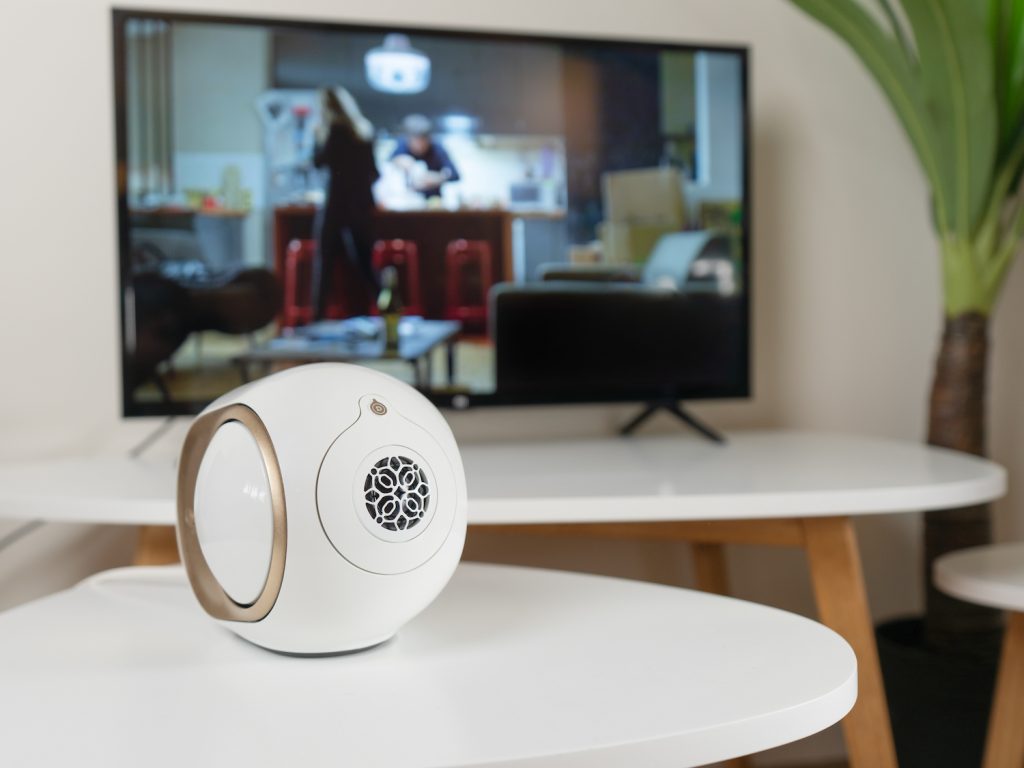
Conclusion
The Devialet Phantom II 98dB Opéra de Paris has some strong points (including an exceptionally good score in the artifacts attribute) and an overall performance that puts it among the better devices we’ve tested, though a notch down from the very best ones.
Where the Phantom II 98 dB Opéra de Paris falls short is the spatial attribute, in part due to its design and nature as a mono device. It’s very directional, especially for treble, meaning that you don’t get that surround-sound feeling. This also affected localizability and distance scores. The tonal balance is uneven in most use cases, with an intense low-midrange focus and a significant lack of clarity. The dynamics performance is held back by aggressive limiting, especially at loud volume.
That all said, as promised in the marketing material, the Devialet device performs well at loud volumes, and it does have a good maximum volume. The tonal balance is good in quiet environments, and the makers were thoughtful in making it relatively easy to adjust the Phantom II to minimize audio/visual latency so it can suitably carry the sound while you’re watching a movie or TV show.


DXOMARK encourages its readers to share comments on the articles. To read or post comments, Disqus cookies are required. Change your Cookies Preferences and read more about our Comment Policy.